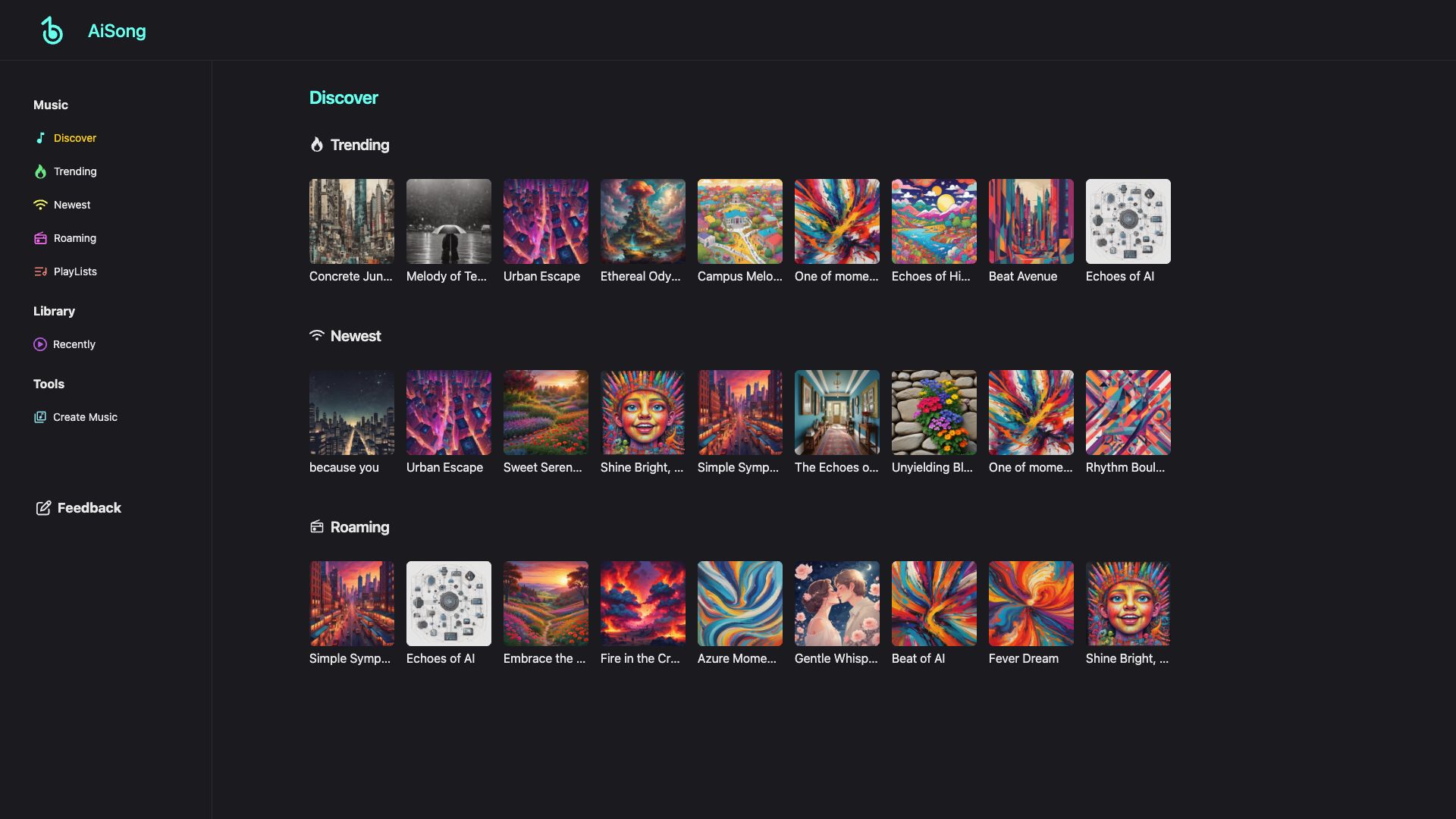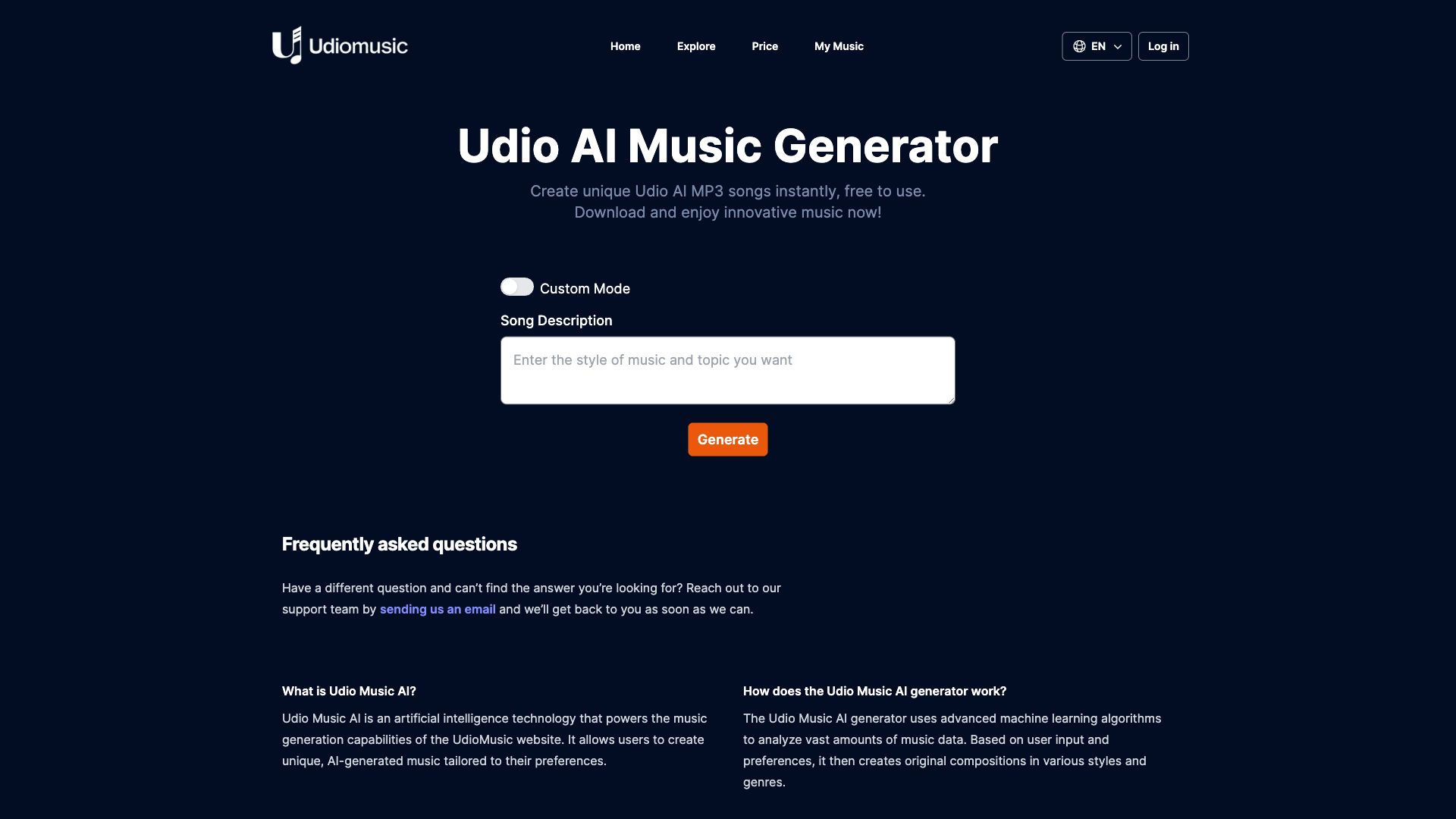Awesome Text-to-Music Tools in 2024
Discover the awesome 2 AI tools for 2024 By Candytools
Aisong crafts personalized melodies just for you, Accessible online for free, experience the perfect musical magic.
Udio Music offers an AI-powered music generator to create unique, royalty-free tracks in seconds. Choose your genre, mood, and length, and let our AI craft the perfect music for your projects.
More AI Tools Categories
What is Text-to-Music?
Text-to-Music: Turning Words into Melodies
Text-to-music is a fascinating field that uses Artificial Intelligence (AI) to generate musical pieces based on textual descriptions or prompts. Essentially, it allows you to describe the kind of music you want, and the AI will compose it for you.
Here's a breakdown of how it works:
1. The Input:
- You provide the AI with text, which can be anything from a single word ("joyful") to a detailed description of a scene ("a lonely walk on a windy beach at sunset") or even lyrics.
2. The AI Engine:
- The AI model, trained on massive datasets of music and text, analyzes the input text.
- It identifies keywords, emotions, and other semantic information to understand the desired musical style, mood, and instrumentation.
3. Music Generation:
- The AI then uses this information to generate a musical composition.
- This can involve creating melodies, harmonies, rhythms, and even choosing appropriate instruments for the desired sound.
4. Output:
- The final output is a musical piece that, ideally, reflects the emotions and imagery conveyed in the input text.
Current State of Text-to-Music:
Text-to-music is still a developing field, but there have been significant advancements in recent years.
- Increased sophistication: AI models are becoming more sophisticated, capable of understanding complex musical concepts and generating more nuanced and expressive music.
- Variety of outputs: The generated music can range from simple melodies to complete songs with multiple instruments and sections.
- Accessibility: Several online tools and platforms are emerging that allow anyone to experiment with text-to-music generation, making it more accessible to the public.
Applications and Potential:
- Creative exploration: Text-to-music can be a powerful tool for musicians and composers to explore new ideas and find inspiration.
- Personalized music experiences: It could allow users to create personalized soundtracks for their lives, tailored to specific moods or activities.
- Accessibility for non-musicians: Text-to-music empowers anyone, regardless of their musical background, to create original music.
Challenges and Limitations:
- Subjectivity of music: Music is highly subjective, and translating textual descriptions into musical expressions that perfectly capture the intended emotion can be challenging.
- Limited control: Users may have limited control over the specific details of the generated music, making it difficult to achieve a precise desired outcome.
- Ethical considerations: Questions arise regarding copyright and ownership of AI-generated music.
Despite the challenges, text-to-music holds immense potential to revolutionize music creation and consumption, making the power of music more accessible and personalized than ever before.

